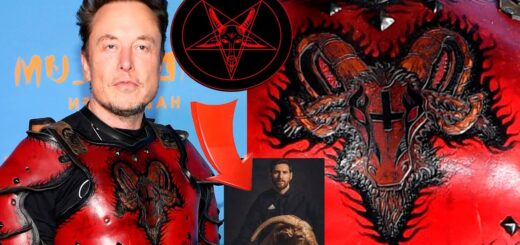As leftists look to cancel Christopher Columbus and today’s annual holiday commemorating him — that is, the man who discovered this land that is the United States of America — they’re also looking to replace the great explorer with a day of their own. That new day for these cultural revolutionaries, celebrated all the way up to the level of their president, one Joseph Robinette Biden, is something called Indigenous Peoples’ Day.
How ironic this is.
Among the sins that leftists try to peg on Columbus is slavery. And yet, many of their indigenous peoples, including the so-called “civilized” among them, in fact owned slaves. No, I’m not merely talking about their savage cruelty toward fellow tribes. I’m talking about their brute treatment of the black African slaves they owned, in some cases even after the Civil War. (READ MORE from Paul Kengor: Hamas Attacks Israel on the 50th Anniversary of the October 1973 War)
Now there’s something that progressives will not be teaching the kiddies this Indigenous Peoples’ Day.
I unfortunately know too much about this subject, having written a book on slavery. The ugly truth about slavery is that it isn’t America’s original sin; it’s humanity’s sin. Scholars trace slavery back 9,000-11,000 years ago. Pretty much every culture engaged in the practice. Open your Bible and read about Jews being enslaved constantly. Do a little more digging and read about Egyptian slavers, Mesopotamian slavers, Chinese slavers, the Incans, the ferocious Aztecs and Mayans hailed if not revered by the maniacs in our public schools, and, of course, the most militant slavers of them all: Muslims.
But pick up your kid’s civics text and you’ll find a total whitewash on the subject of Native American slavers.
For the record, many modern black Americans are not ignorant of that past. There are blacks today with literal lawsuits still against those Indian tribes. These black Americans probably wonder why university professors, liberal journalists, and Democrats have been silent on this racism against their people.
My book includes a long chapter on these Indigenous slavers. I cannot do the subject adequate justice here, but I’ll share a few thoughts.
Indigenous Slave Masters
Native American tribes in the continental United States engaged in slavery before and after 1776, far into the 19th century, and even owned black African slaves as well as enslaving one another. Many of these tribes sided with the Confederacy during the Civil War in order to preserve slavery. (READ MORE: Why Can So Many Trace Their Ancestry to the Cherokees?)
This is well known to historians who bother with the subject, though it would elicit a long, blank stare if not full meltdown from the typical product of our morally bankrupt universities. Our young people have been taught to place on a pedestal any and every Native American as living a pure and perfect life — until the cruel Columbus and fellow white Europeans marched along to subjugate them.
Consider the example of the enslavement of blacks by the five so-called “Civilized Tribes” — i.e., the Cherokee, Chickasaw, Choctaw, Creek, and Seminole Indians. Ryan P. Smith writes in Smithsonian Magazine:
When you think of the Trail of Tears, you likely imagine a long procession of suffering Cherokee Indians forced westward by a villainous Andrew Jackson. Perhaps you envision unscrupulous white slaveholders…. What you probably don’t picture are Cherokee slaveholders, foremost among them Cherokee chief John Ross. What you probably don’t picture are the numerous African-American slaves, Cherokee-owned, who made the brutal march themselves, or else were shipped en masse to what is now Oklahoma aboard cramped boats by their wealthy Indian masters.
Smith underscored these “uncomfortable complications in the narrative” that were brought to the forefront at an event held at the National Museum of the American Indian. Titled “Finding Common Ground,” the symposium was focused on “intersectional African-American and Native American history.” It was hosted by museum curator Paul Chaat Smith, himself a Comanche. “I used to like history,” remarked Chaat Smith wryly. “And sometimes, I still do. But not most of the time.”
Slavery would continue among these Indians post-Civil War. Their black slaves remained their black slaves.
The case of the enslavement of blacks by prominent members of the Civilized Tribes is one example of uncomfortable history that Chaat Smith does not like. It is not a “crowd-pleasing narrative.” He notes that people would prefer a narrative of “the enslaved black people and soon-to-be-exiled red people would join forces and defeat their oppressor.”
They would indeed. American progressives eagerly embrace false narratives rather than truthful ones if it advances their anti-Western ideological cause.
But here is the uncomfortable reality, as Ryan Smith notes: “The Five Civilized Tribes were deeply committed to slavery, established their own racialized black codes, immediately reestablished slavery when they arrived in Indian territory, rebuilt their nations with slave labor, crushed slave rebellions, and enthusiastically sided with the Confederacy in the Civil War.”
They also owned blacks. How many? No one really knows, and you can be certain that college professors aren’t tripping over one another to get to archives. One source estimates:
By 1824, it is estimated that the Cherokee owned 1,277 black slaves; the Choctaw and the Chickasaw held over 5,000 blacks in slavery by 1860. Some mixed-blood Indians, such as the Choctaw chief Greenwood Lefore and the Cherokee chief John Ross, owned between 100 and 400 enslaved blacks respectively [that was more than George Washington owned]. And when the southeastern Indians were forcefully marched west to present-day Oklahoma by the American government in the infamous “Trail of Tears” in the 1830s and 1840s, as many as 15,000 enslaved blacks were taken with them….
The harsher treatment of blacks by the Five Civilized Tribes, including the Seminoles, possibly stemmed in part from the larger number of enslaved blacks held by Indians after the removal. The number of enslaved blacks among the Creeks increased from 502 to 1,532; among the Cherokees, the number grew from 1,592, to 2,511; among the Choctaw, from 512 to 2,349; and among the Chickasaw, the number climbed from several hundred to around 1,000. For the Seminole, the number increased from 500 to somewhat less than 1,000.
“The truth is that the practice of slavery will forever cast a shadow on the great Cherokee Nation.”
According to scholar Barbara Krauthamer, an expert who has published books on the subject, American Indians in the 1830s and 1840s brought their slaves with them westward when the federal government removed the Indian nations from the southern states. Krauthamer says that the Cherokee had the largest number of black slaves, with more than 1,500. At the time of the start of the Civil War, says Krauthamer, more than 8,000 blacks were enslaved in Indian Territory, comprising 14 percent of the total population. Moreover, she states, “Though many Indian leaders debated the implications of severing their ties to the Union, Choctaw and Chickasaw leaders almost universally cast their lot with the Confederacy.” (READ MORE: Happy Western Civ Day!)
They stood with Jefferson Davis, not Abraham Lincoln. They wanted to keep their Negro slaves.
Indigenous Racists and Torturers
There was an indigenous racism at the basis of this indigenous slavery.
As Krauthamer notes, racism was very much a part of these indigenous attitudes. The Indians saw blacks as inferior: “Choctaws and Chickasaws purchased slaves — men, women, and children — to work on their Mississippi farms and plantations and to serve in their homes. Slaveholders and those who did not own slaves embraced a racial ideology that affirmed black people’s inherent difference and inferiority and thus justified their enslavement.”
Our creative liberals might prefer to imagine these indigenous peoples freeing black slaves from the wretched white man and smoking peace pipes and singing Kumbaya together. Not quite, dear wokester.
The Indians’ treatment of slaves was horrific, whether black slaves or captive members of other tribes. They captured them and often tortured them, sometimes killing them outright before they could use them as slaves. “Like other Native peoples, such as the Cherokees, Choctaws and Chickasaws, they usually put male captives to death after a period of ritualized torture,” states Krauthamer. “On one occasion in 1752, for example, Choctaws whipped a captive Chickasaw warrior for three days and planned on burning him to death on the fourth day, but he escaped.” In the same year, she adds, Chickasaws tortured two captive Choctaw warriors in what was described by a witness as “a most barbarous Manner, taking off their Scalps and cutting out their Bowels before they were dead.”
Torture was common.
Another scholar, Tony Seybert, notes that some Indians cut off one foot of their captives to keep them from running away. Slaves were desperate to flee, not only from ongoing cruel treatment but from being subject to ritualistic human sacrifice (as with the fiendish Aztecs). “Not surprisingly, some Indian slaveholders treated their enslaved blacks with abject cruelty,” writes Seybert. “The Cherokee mixed-blood James Vann, for example, is reported to have buried a slave alive as punishment for robbery…. [T]he death penalty was instituted for any slave convicted of raping a Cherokee woman.” (READ MORE: The Washington Commies)
The mistreatment was common.
As noted by Jason D. Hill, an African American professor of philosophy at DePaul University:
The notion that they [American Indians] all constituted a peace-loving assemblage of tribes is naïve at best and a perniciously false attempt to camouflage history at worst. American Indians owned slaves, including African Americans, and they conquered several competing tribes long after Columbus arrived on the continent. They burned villages, kidnapped children, raped women, and scalped their enemies. They behaved like savages.
This information has long been known, though restricted to circles who have bothered to accurately study this past. “The truth is that the practice of slavery will forever cast a shadow on the great Cherokee Nation,” wrote the late Cherokee Nation Principal Chief Wilma Mankiller.
Well, it would if people knew about it. If it was taught. Fear not, Chief Wilma, our government-funded universities and top newspapers are focused on “1619.” Your people will get a pass.
Among those few in the know are black Cherokee slave descendants known as the “freedmen.” The Cherokee Supreme Court has stripped some of them of their Cherokee citizenship and other basic rights, including the right to vote and to access all medical, educational, and housing services provided to tribal citizens, leading to protracted court trials (this actually received some coverage in the Washington Post and Time magazine).
Such is not unique to the Cherokees. The Seminoles and other tribes have denied the black descendants of black slaves of Indians numerous rights, benefits, and citizenship, and in turn have been accused of outright discrimination, bigotry, and “systemic racism” by African Americans in the 21st century (click here and here for more).
Where’s the Emancipation?
This slavery of blacks by Native Americans persisted, often on huge plantations owned and run by Indians. One scholar notes: “In the Southeast, an elite class of Indians began to hold African Americans in transgenerational slavery and, by 1800, developed plantations that rivaled those of their white neighbors.”
This slavery was so entrenched that it went beyond the Civil War and Emancipation Proclamation. Another scholar adds: “Even Emancipation and the end of the Civil War did not bring immediate relief to the enslaved living in the Choctaw and Chickasaw Nations. Although the Choctaw and Chickasaw sided with the Confederacy during the conflict, the United States considered them to be separate political polities; therefore, the abolition of slavery as stated in the Thirteenth Amendment did not apply in Indian Territory.”
Think about that.
Slavery would continue among these Indians post-Civil War. Their black slaves remained their black slaves.
* * *
So much more could be said about this subject, not only in this article but, of course, above all, in our schools, from K-12 to the universities. But don’t hold your breath, pilgrim. On this Indigenous Peoples’ Day, their targets are Columbus, the Mayflower, 1619, and really, Western civilization as a whole. (READ MORE: Columbus Day and Hispanic Day Are Triumphs for Western Civilization)
To the leftists smearing America, this land was a Shining City Upon a Hill until Columbus and the pilgrims got here. All would have been well, downright utopian, if not for those European devils who brought their boats and diseases and whips and chains with them.
Telling the truth about slave-owning Indigenous peoples does not serve the cultural revolution. That’s a story best left untold.
















